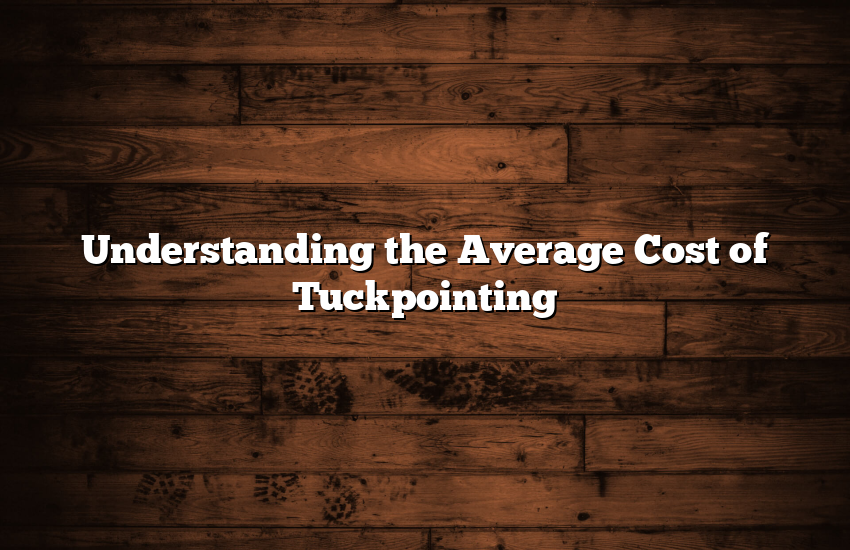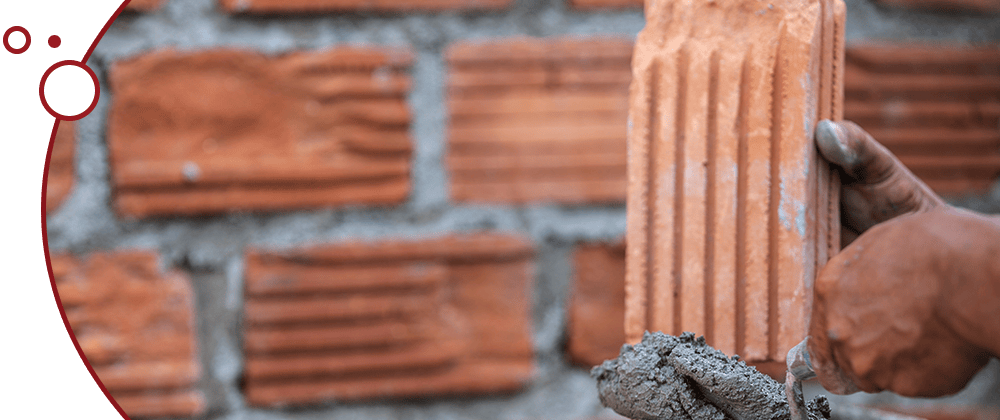
Tuckpointing, a vital maintenance practice for brick structures, is essential in preserving the integrity and aesthetics of buildings. It involves meticulously removing old, deteriorated mortar and replacing it with new mortar, matched to the color of the bricks, and then inserting a fine line of contrasting mortar. This technique not only strengthens the structure but also enhances its visual appeal. The average cost of tuckpointing, although seen as a significant investment, is justified by the detailed, labor-intensive nature of the task and the long-term benefits it offers.
Table of Contents
Why Tuckpointing is Crucial for Your Property
The Necessity of Tuckpointing: Regular inspection of brick structures for signs of mortar deterioration is crucial. Cracks or gaps in the mortar, or dampness within the property, often indicate the need for tuckpointing. Ignoring these signs can lead to more severe damage, emphasizing the importance of timely maintenance.
Tuckpointing vs. Repointing: While both processes involve renewing mortar joints, tuckpointing is more specialized, focusing on aesthetic restoration and the longevity of the structure. This intricate process requires skilled craftsmanship, influencing the average price for tuckpointing.
Factors Influencing Tuckpointing Costs
- Scope and Size of the Project: The extent of the area needing tuckpointing significantly affects the total cost. Smaller sections, like a chimney, will cost less compared to an entire house.
- Location and Accessibility: Costs can vary based on geographic location and the ease of accessing the area requiring work.
- Material and Labor Costs: The price of materials and the labor rates in your area will impact the overall cost.
The Financial Aspect of Tuckpointing
Average Costs Explored: HomeGuide suggests that for a 20-square-foot section, costs range from $100 to $500. However, tuckpointing an entire house could cost up to $40,000, depending on various factors.
Why the High Cost?: The process is labor-intensive and requires skilled labor, which contributes to its higher cost. In the long run, this investment protects the property from structural damages and proves to be cost-effective.
Longevity and Value: Properly executed tuckpointing can last up to 30 years, providing long-term protection and enhancing the property’s curb appeal.
Conclusion
Understanding the average cost of tuckpointing is crucial for homeowners and property managers. While it might seem costly, the investment in tuckpointing is a proactive step towards preserving and enhancing your property’s value and longevity. With skilled labor and quality materials, tuckpointing not only repairs but revitalizes the appearance of brick structures, making it a worthwhile investment for any property owner.
FAQs on Tuckpointing
Q1: What is the average cost of tuckpointing per square foot?
A1: The cost varies, but it typically ranges from $5 to $25 per square foot, depending on the project’s complexity and location.
Q2: Is tuckpointing a worthy investment?
A2: Absolutely. It not only strengthens the structure but also enhances its aesthetic appeal, potentially increasing property value.
Q3: Can I do tuckpointing myself?
A3: Tuckpointing requires skill and precision. It’s recommended to hire professionals to ensure quality and durability.
Q4: How often should tuckpointing be done?
A4: It generally lasts about 30 years, but this can vary based on environmental factors and the quality of the initial work.
Q5: Does tuckpointing improve home value?
A5: Yes, it can significantly enhance curb appeal and structural integrity, contributing to higher property values.


